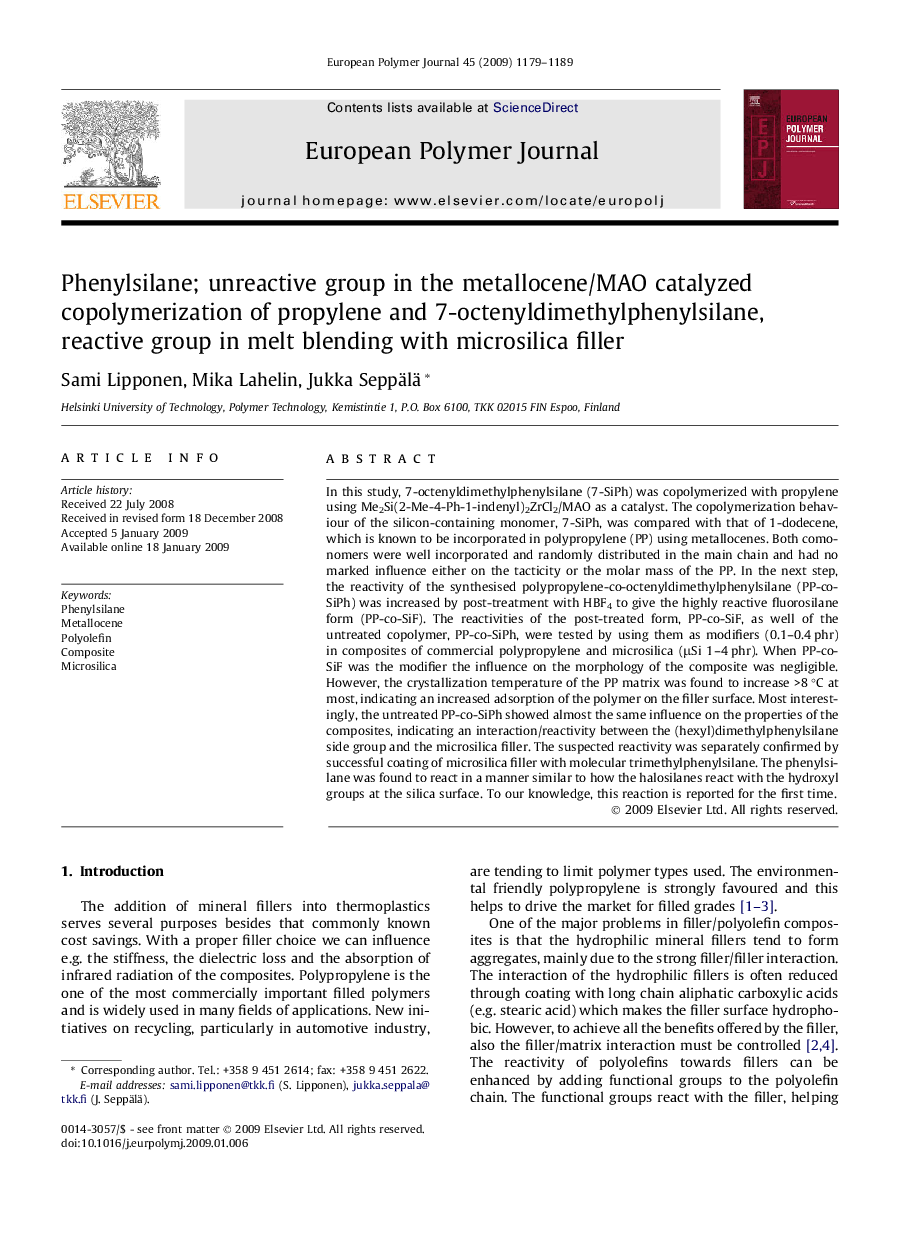| Article ID | Journal | Published Year | Pages | File Type |
|---|---|---|---|---|
| 1396360 | European Polymer Journal | 2009 | 11 Pages |
In this study, 7-octenyldimethylphenylsilane (7-SiPh) was copolymerized with propylene using Me2Si(2-Me-4-Ph-1-indenyl)2ZrCl2/MAO as a catalyst. The copolymerization behaviour of the silicon-containing monomer, 7-SiPh, was compared with that of 1-dodecene, which is known to be incorporated in polypropylene (PP) using metallocenes. Both comonomers were well incorporated and randomly distributed in the main chain and had no marked influence either on the tacticity or the molar mass of the PP. In the next step, the reactivity of the synthesised polypropylene-co-octenyldimethylphenylsilane (PP-co-SiPh) was increased by post-treatment with HBF4 to give the highly reactive fluorosilane form (PP-co-SiF). The reactivities of the post-treated form, PP-co-SiF, as well of the untreated copolymer, PP-co-SiPh, were tested by using them as modifiers (0.1–0.4 phr) in composites of commercial polypropylene and microsilica (μSi 1–4 phr). When PP-co-SiF was the modifier the influence on the morphology of the composite was negligible. However, the crystallization temperature of the PP matrix was found to increase >8 °C at most, indicating an increased adsorption of the polymer on the filler surface. Most interestingly, the untreated PP-co-SiPh showed almost the same influence on the properties of the composites, indicating an interaction/reactivity between the (hexyl)dimethylphenylsilane side group and the microsilica filler. The suspected reactivity was separately confirmed by successful coating of microsilica filler with molecular trimethylphenylsilane. The phenylsilane was found to react in a manner similar to how the halosilanes react with the hydroxyl groups at the silica surface. To our knowledge, this reaction is reported for the first time.
